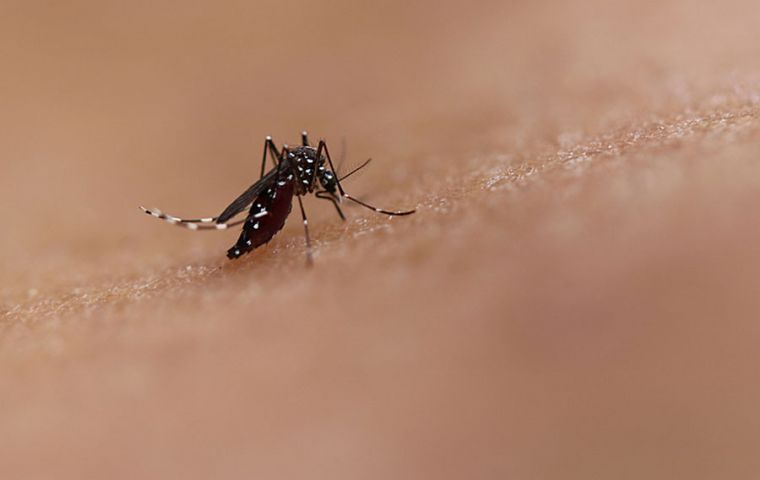MercoPress. South Atlantic News Agency
Increase in dengue cases in Brazil poses threat to Argentina
 “What happens in Brazil may have repercussions in Argentina,” Tejerina warned
“What happens in Brazil may have repercussions in Argentina,” Tejerina warned A leading Argentine scientist believes that the increase in the number of cases of dengue reported in neighboring Brazil requires action from local health authorities amid threats of local outbreaks.
According to Biologist Fabricio Tejerina from the Research Group on Mosquitoes in Argentina (Gima), the Aedes Aegypti mosquito is one of the species most researched after homo sapiens sapiens.
But “unfortunately, these diseases continue to advance because they have to do with social conditions and how we generate favorable conditions for this mosquito to adapt to the places where we live,” explained Tejerina, who heads the Institute of Epidemiological Surveillance and Vectors of the Municipality of Posadas, in the province of Misiones.
One of the Institute's main tasks is to prevent the recurrence of an outbreak, after the last one in 2019-2020 recorded nearly 54,000 cases.
In the last 10 to 15 years, the dengue--causing mosquitoes spread southward, reaching the provinces of La Pampa, Buenos Aires, and the Cuyo (Mendoza, San Juan, and San Luis) region, Tejerina also pointed out.
In 2020, a major outbreak was recorded in La Rioja City with the same number of cases as Misiones (10,000).
Man-made conditions make reproduction easier for the mosquito, Tejerina insisted. ”Places where water is stored; climate change, and the increase in temperatures (also caused by man's actions) cause the mosquito to begin to conquer new places; being in new places, any person who gets sick and is bitten can start an outbreak of dengue, and so the risk is stretching,“ the biologist also warned. ”The mosquito is adapting to other places, for example, to areas with temperate or cold weather...“
The Aedes Aegypti ”is adapting ... [to] places where conditions are changing and [it] is finding ecological niches that it can conquer,“ he added. ”If we look around the world, more than two million people are in tropical or subtropical areas where Aedes Aegypti is present. But it is also a risk in temperate zones. In Cordoba, for example, there has been a major outbreak in recent years,“ Tejerina also explained
Climate change is shortening winters in some places. ”We know that the biology and cycle of insects are closely associated with temperature; they need heat, so the warmer it is, the more they reproduce,“ the researcher noted, who added that the insect's cold-weather-resisting eggs are their way of surviving through winter. Hence, more mosquitoes are to be seen in the summer, and their population ”peaks in March,“ Tejerina stressed. Each mosquito can lay between 100 to 300 eggs, particularly in places with accumulated water.
People need to constantly eliminate these places and clean them properly. ”The more places that accumulate water, the greater the probability that there will be breeding sites, the greater the number of mosquitoes, and in turn, the greater the probability that they will bite a sick person,“ Tejerina reasoned.
The scientist also drew attention to Brazil's most recent statistics, which showed that from January to July 2022 they had twice as many cases as in 2021 and more than twice as many deaths as in 2021. ”In 2021 they had 250 deaths and now they had 510 deaths from dengue,“ Tejerina underlined.
The ”scenario is very similar to what happened in 2015; so you have to remember what happened in 2016 in Argentina. What happens in Brazil may have repercussions in Argentina,” he warned.




Top Comments
Disclaimer & comment rulesCommenting for this story is now closed.
If you have a Facebook account, become a fan and comment on our Facebook Page!